When deciding how to compare candidates for a job, an evidence-based hiring process goes a long way toward helping organizations make smarter decisions.
Crafting a data-driven hiring approach won’t just help HR teams cut bias out of the hiring process and improve diversity—they’ll also make that process far more reliable and predictive.
Forbes
Discover how to make your recruitment process more data-driven with the 9 methods we share below.
TL;DR – Key Takeaways
- When recruiters evaluate candidates, it’s important to avoid bias and evaluate candidates objectively so the process is fair for anyone that applies.
- What’s the difference between subjective and objective evaluation processes? Having no structure to your interviews and relying on gut feel are examples of subjective practices. Skills assessment tools and structured interviews, for example, will help level the playing field.
- In addition to data-driven measures, other methods for comparing candidates objectively include: creating ideal candidate profiles, conducting interviews as a group or panel, and developing a non-judgmental attitude.
- Help your organization hire fairly with a skills-first approach that reduces bias and saves your team time and money wasted on gut-feel selections. Browse our ready-made skills assessment templates to find what you need.
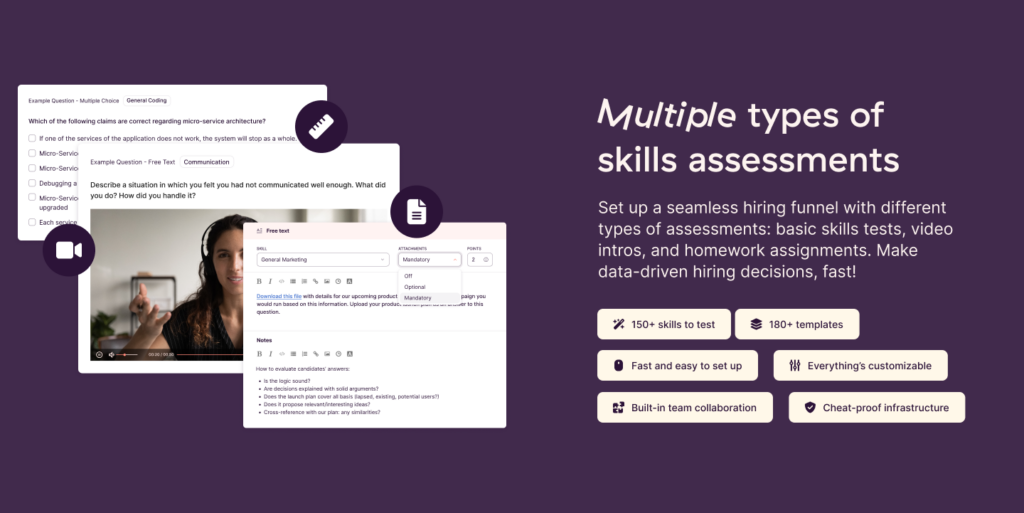
How do recruiters evaluate candidates?
Evaluating whether a candidate is a good fit for the position and the company is an important step in the recruiting process. Since the average cost to hire can be more than $4000 and the cost of a bad hire for a technical or professional role can be over 75% of the position’s salary, it’s not something that companies can afford to get wrong.
Nonetheless, the process can go wrong. Especially when hiring teams rely on their gut feeling for choosing who makes the final cut. And while that has some workability (depending on the recruiter’s level of experience), the risk with that approach is letting bias creep in.
To evaluate candidates objectively, the team needs to use a data-driven approach. This means using statistics and factual information to highlight factors that support the team’s decisions rather than gut feelings.
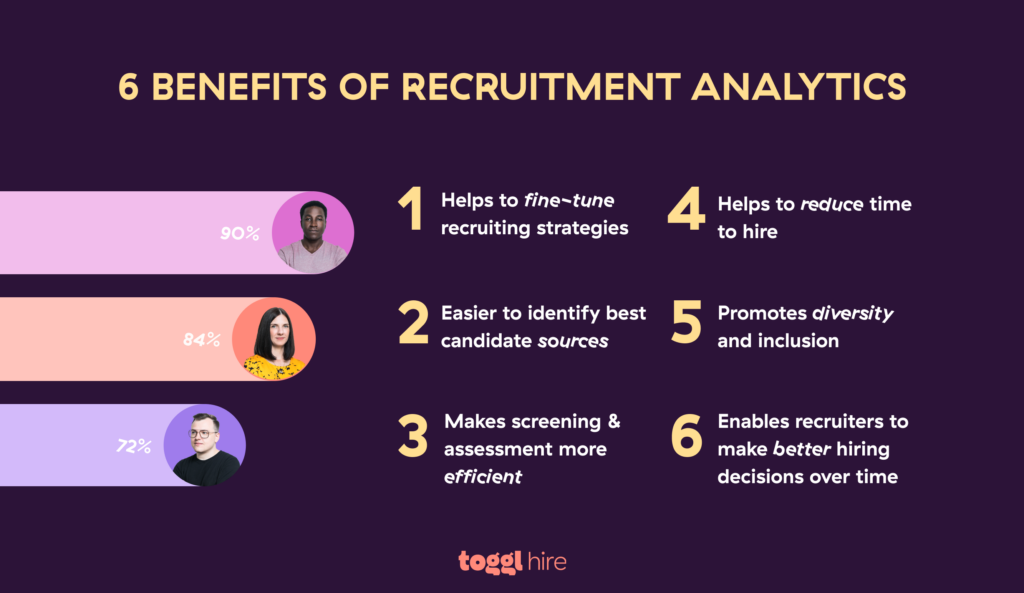
What objective measures can employers use to evaluate job applicants?
To ensure a fair, inclusive hiring process, companies should consider using objective criteria, like a candidate’s hard skills, to assess their suitability for a role.
Basing hiring decisions on personal opinions, such as the candidate having the same hobby as you do, or subjective methods like resumes, opens the door to personal bias and potentially bad hires. (Unless they love hobby-horsing as much as you, that’s a whole different story! 🐴)
Subjective methods can still be effective when used in combination, but as a recruiter, you’ll definitely want to incorporate measures that deliver a fair, unbiased evaluation process, too.
Let’s take a look at some examples of subjective and objective hiring methods:
Objective vs subjective evaluation practices
| Objective | Subjective |
|---|---|
| Ideal candidate profiles | Resume screening |
| Blind hiring practices | Gut feel hiring decisions |
| Skills assessments | Non-standardized testing |
| Structured interviews | Unstructured interviews |
| Panel interviews | Untrained interviewers |
| Interview scorecards | Unverified assessment tools |
| Homework assignments | Social media screening |
In the next section, we deep dive into the list of objective examples to show you our tips and methods for a more fair, predictable, and data-driven candidate comparison!
9 methods how to compare candidates for a job, objectively
When hiring practices focus on data to identify the best candidate, businesses can open their doors to a more diverse candidate pool and potentially more innovation (in fact, 19% more).
Here’s how you can begin the journey to more complete and objective evaluations for your organization.
1. Use skills testing
Skills tests are standardized tests that assess specific skills, knowledge, and aptitude. Skills assessments can test for soft skills, such as communication and decision-making, as well as technical skills, like data analysis or Machine Learning.
Using skills-first hiring is a more modern approach. Firstly, it’s more objective as candidates are evaluated on their technical skills and capabilities. Secondly, it enables teams to do away with manual screening, saving them time.
Skills assessments are also a perfect tool to use for hiring remote employees since everything is digital and automated.
Don’t have the time or in-house expertise to build custom skills tests? You can choose from over 180 job-specific test templates for evaluating candidates objectively. Check out our vast test library and create your first test in just a few clicks!
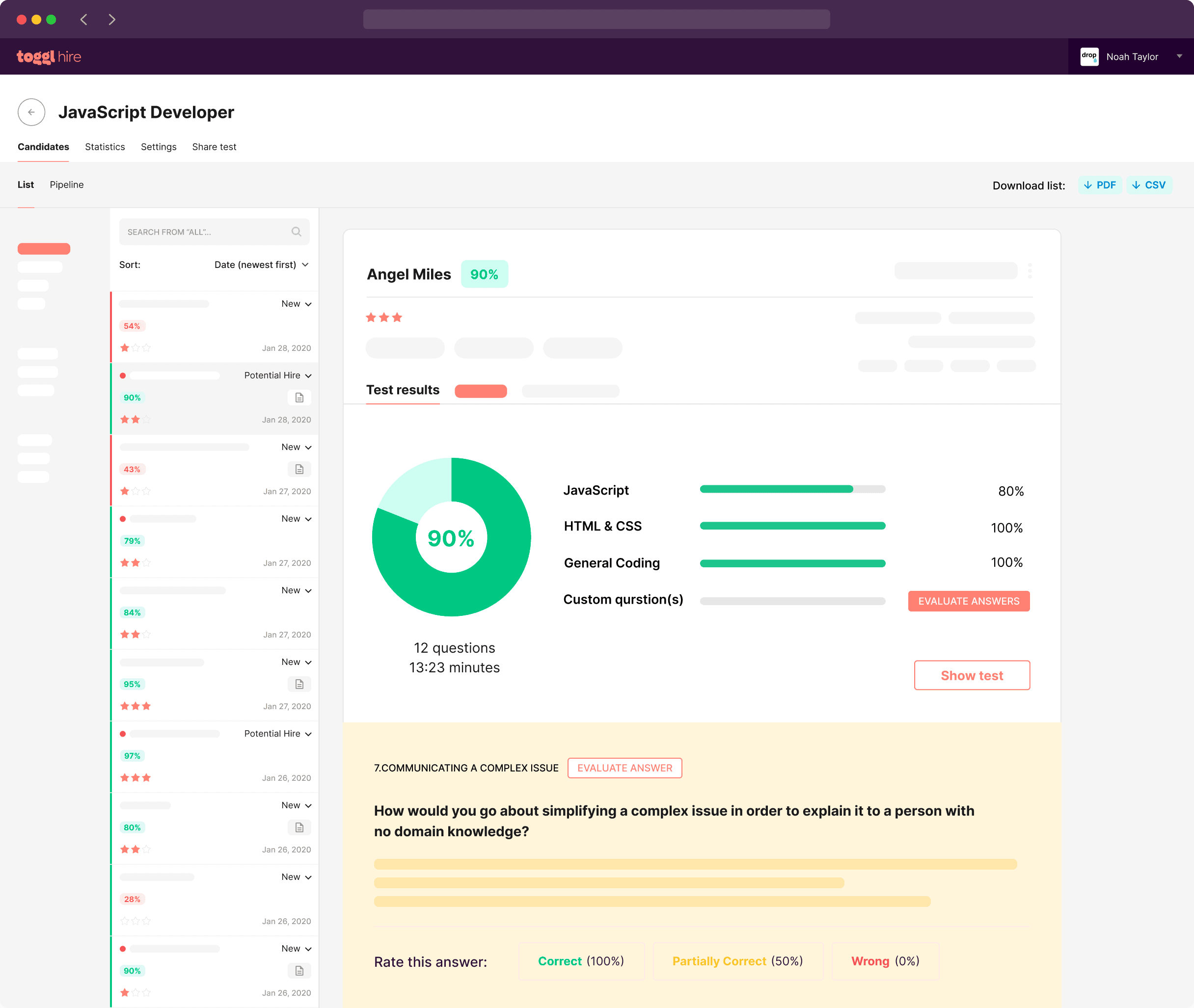
2. Utilize objective resume screening tools
Objective resume screening tools, like blind hiring, reduce the chances of personal bias influencing hiring decisions, as panels don’t get personal information on job candidates that could sway their opinion. Other tools the team can use to screen resumes include:
- Artificial intelligence (AI) resume screening software
- Resume parsing tools
- Semantic search and matching tools
📚 9 Resume Screening Tools to Boost Your Hiring
3. Create ideal candidate profiles
An ideal candidate profile, or ICP, is a recruitment tool that lists all the skills, qualifications, and attributes needed for a specific role. It helps hiring teams objectively evaluate which candidates are a good fit for a role based on how many of the criteria they fulfill.
As a result, it also streamlines candidate sourcing and helps organizations hire quality candidates.
If the hiring team struggles to decide between two candidates, refer back to the ICP to determine what’s really important for success in that particular role.
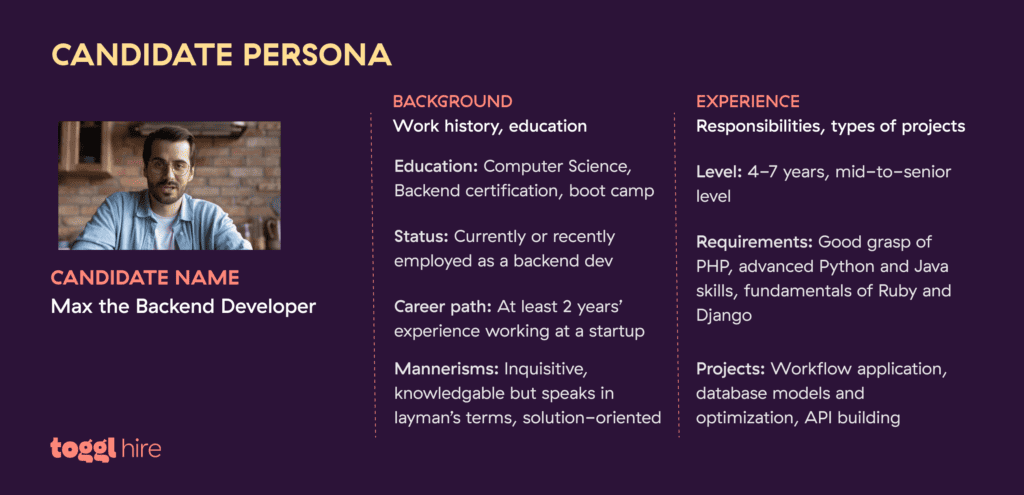
4. Conduct structured interviews
When a hiring manager or panel conduct structured interviews, it means they’re using a pre-defined set of interview questions.
Since everyone sticks to the same questions, especially when there are hundreds of applicants for an open position, it makes the process more transparent and fair for potential new hires.
Because structured interviews help to standardize the interview process, they can also improve the interview experience by reducing the risk of interviewer bias.
Unstructured interviews are useful later on in the recruitment cycle to gain a deeper understanding of applicants and their potential cultural fit.
Preparing for interview? Steal these interview questions:
5. Perform group, panel, and peer interviews
When a panel, group, or team of peers conducts an interview, a broader range of opinions is at play.
While individual interviewers may have their own blend of bias tendencies, conducting a group or panel interview can reduce the risk of bias as not everyone will have the same biases, ensuring a more fair outcome.
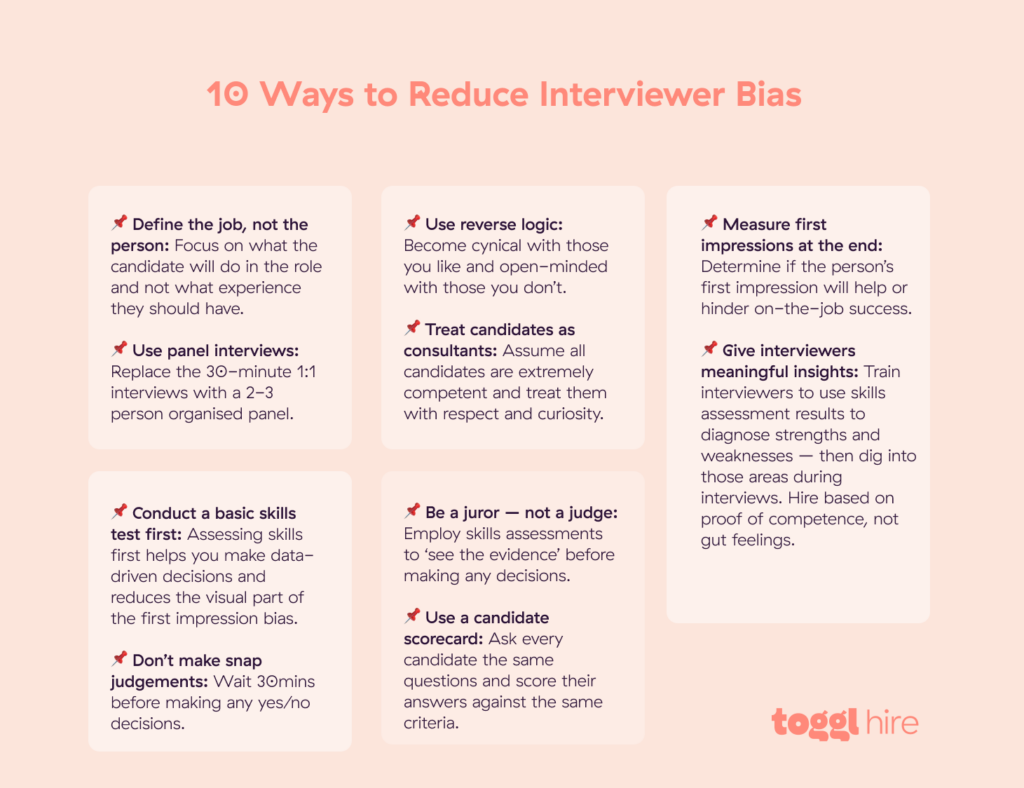
Don’t discuss candidates directly after a group interview until everyone has completed their interview evaluation form, so no one is influenced by other members’ viewpoints.
6. Utilize interview scorecards
Using an interview scorecard means scoring each candidate by a set of pre-determined criteria, such as technical ability or communication skills.
These scorecards provide unbiased quantitative data to help teams make analytical decisions that make the hiring process more consistent and fair.
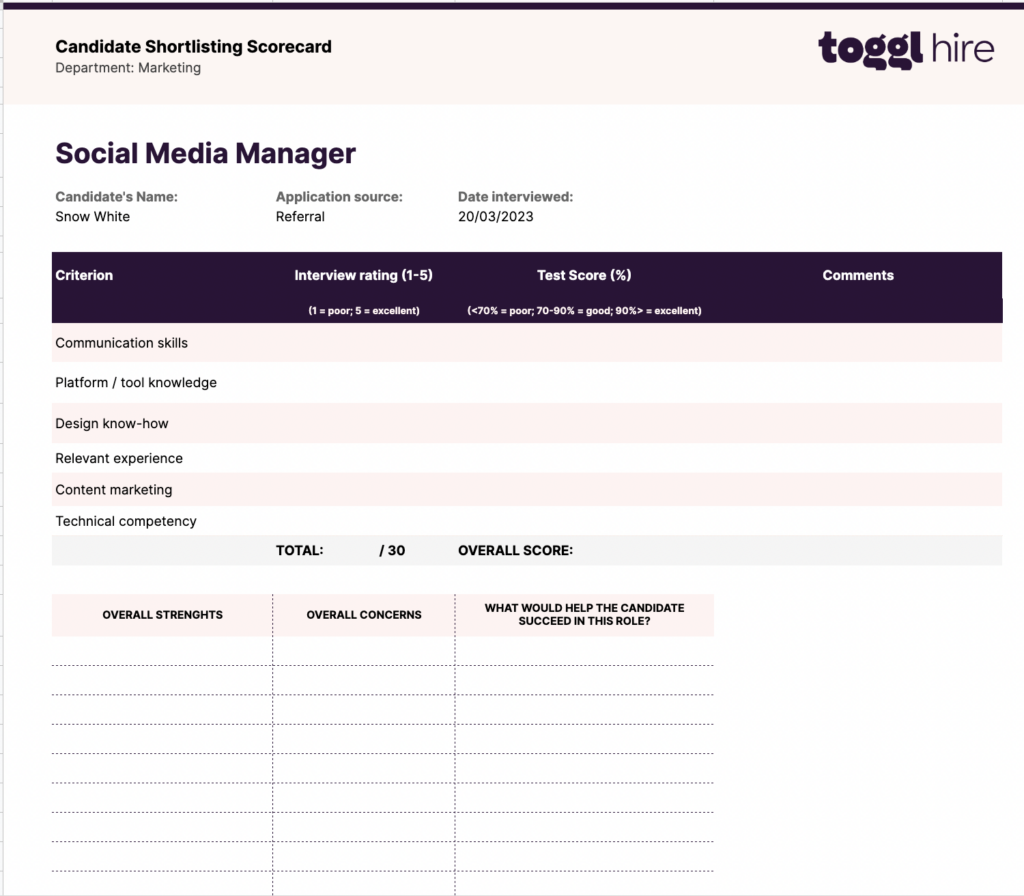
Ensure all interviewers understand and agree on the scoring system and weight of importance for each score, such as 1 – poor and 5 – excellent, before the interviews. Grab a free scorecard template!
7. Provide interview training
Good interviewers are trained interviewers. Getting everyone on the panel up to speed on the basics of interviewing is important to ensure the interview is conducted professionally and in a way that minimizes bias.
While some managers may not think they need interview training, both the company and the candidate benefit when best practices are followed.
Another aspect to consider is how to best conduct virtual interviews for hiring candidates remotely, for instance.
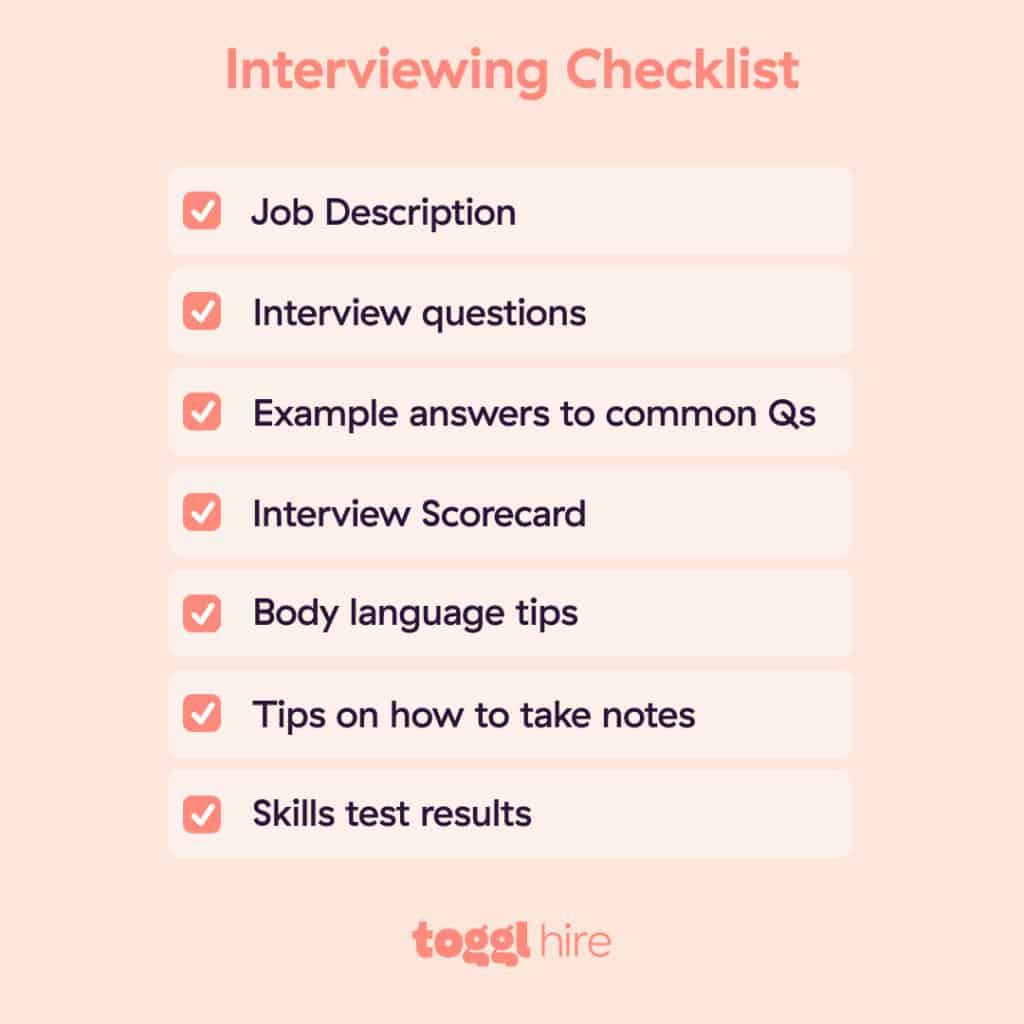
8. Conduct post-interview evaluations
After interviewing applicants, the hiring team will review all aspects of each candidate, from their CV and skills test results to interview performance and body language.
This provides a holistic picture of each qualified candidate, fairly assessing their strengths and weaknesses.
Most companies include criteria such as these in their candidate evaluation:
- Work experience
- Educational background
- Training and qualifications
- Technical and soft skills
- Leadership skills
- Teamwork
- Attitude
9. Have a non-judgmental attitude during the interview process
While jumping to positive or negative conclusions about candidates when you first meet them is easy, these snap judgments can cloud your thinking and introduce personal bias.
Also, bear in mind that judgment can be a two-way street, so ensure you always have a good attitude, employ good communication skills and present positive body language during interviews.
Try reverse logic if you feel you’re making snap judgments. In other words, be open-minded with candidates you feel you don’t like and a little more cynical with those you do.
Support an objective hiring process with skills tests
So your interview process has left you with two great candidates. What next?
To make an objective decision on which candidate will succeed and best suit your organization, test their true capabilities with a skills test or a more practical homework assessment. No bias, no fuss.
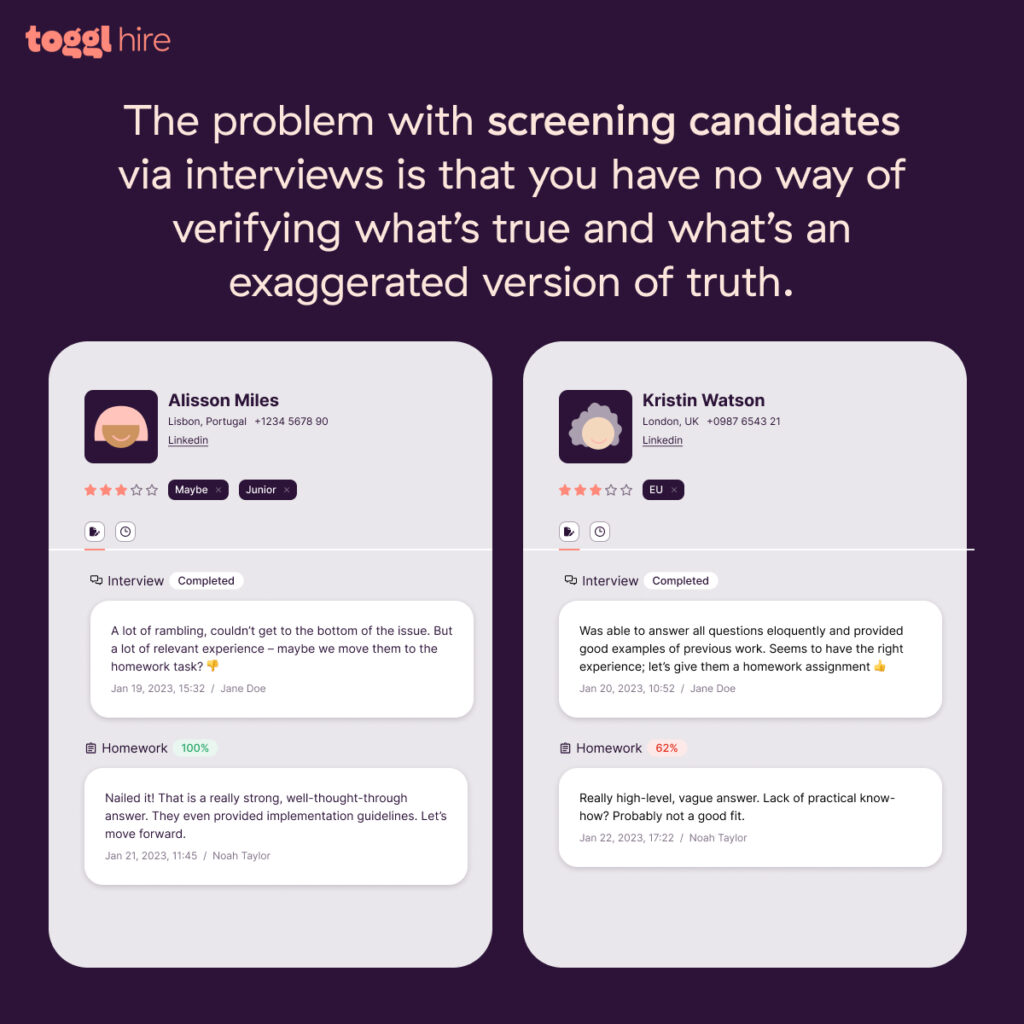
Modernize your candidate evaluation process by introducing an automated and objective talent screening tool.
And for those candidates that didn’t make the cut, your hiring manager can share the news in a way that doesn’t break their heart with these rejection letter tips to soften the blow.
Juste loves investigating through writing. A copywriter by trade, she spent the last ten years in startups, telling stories and building marketing teams. She works at Toggl Hire and writes about how businesses can recruit really great people.





